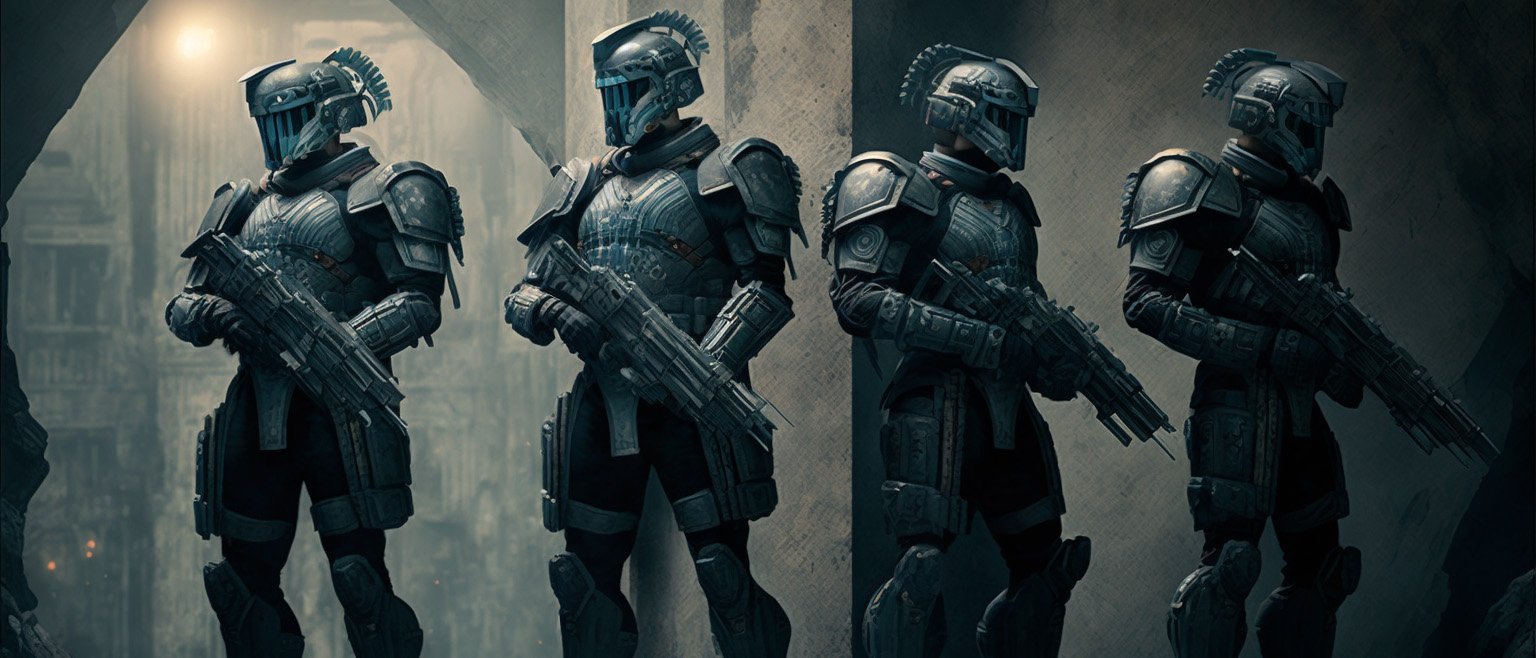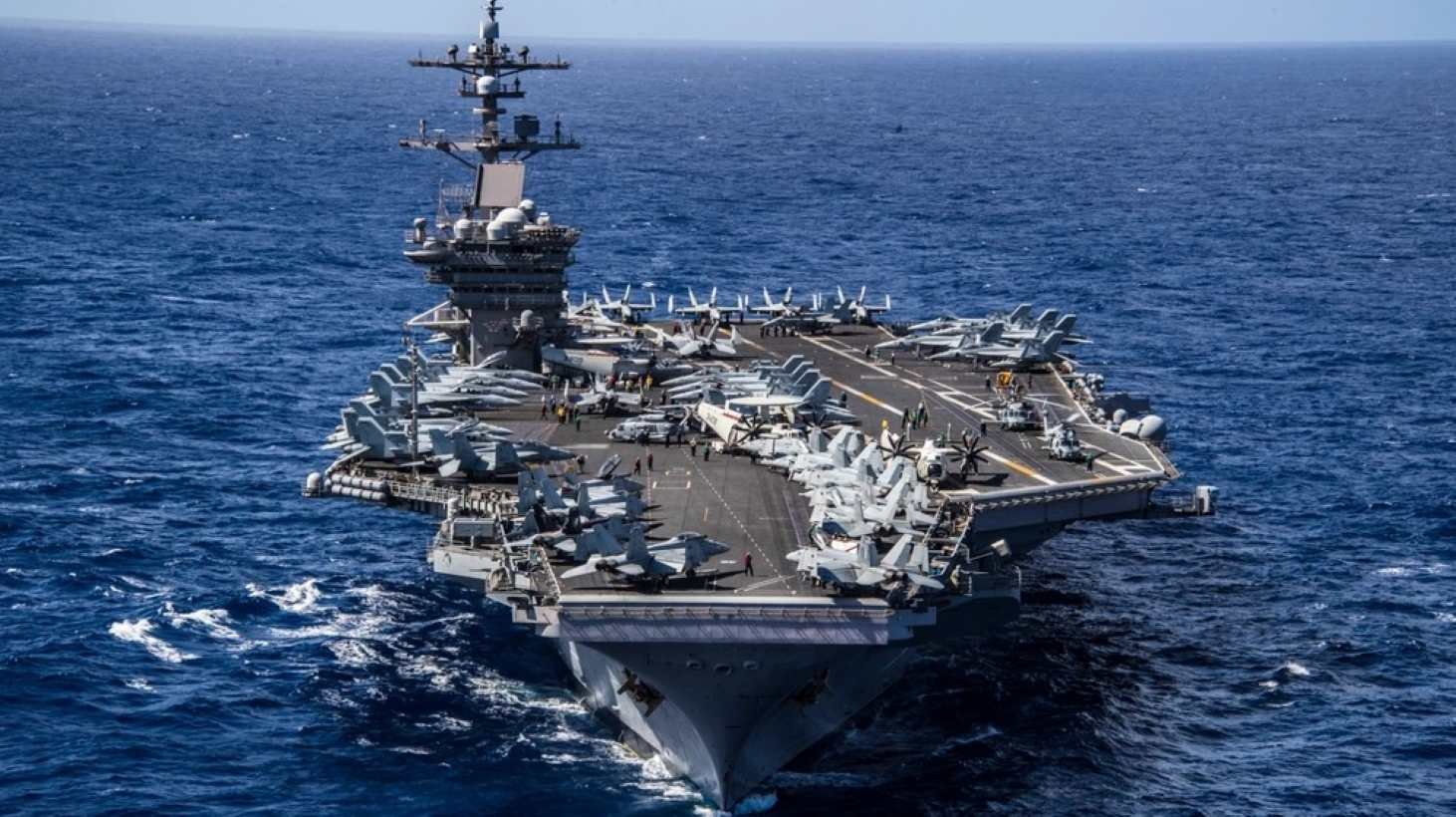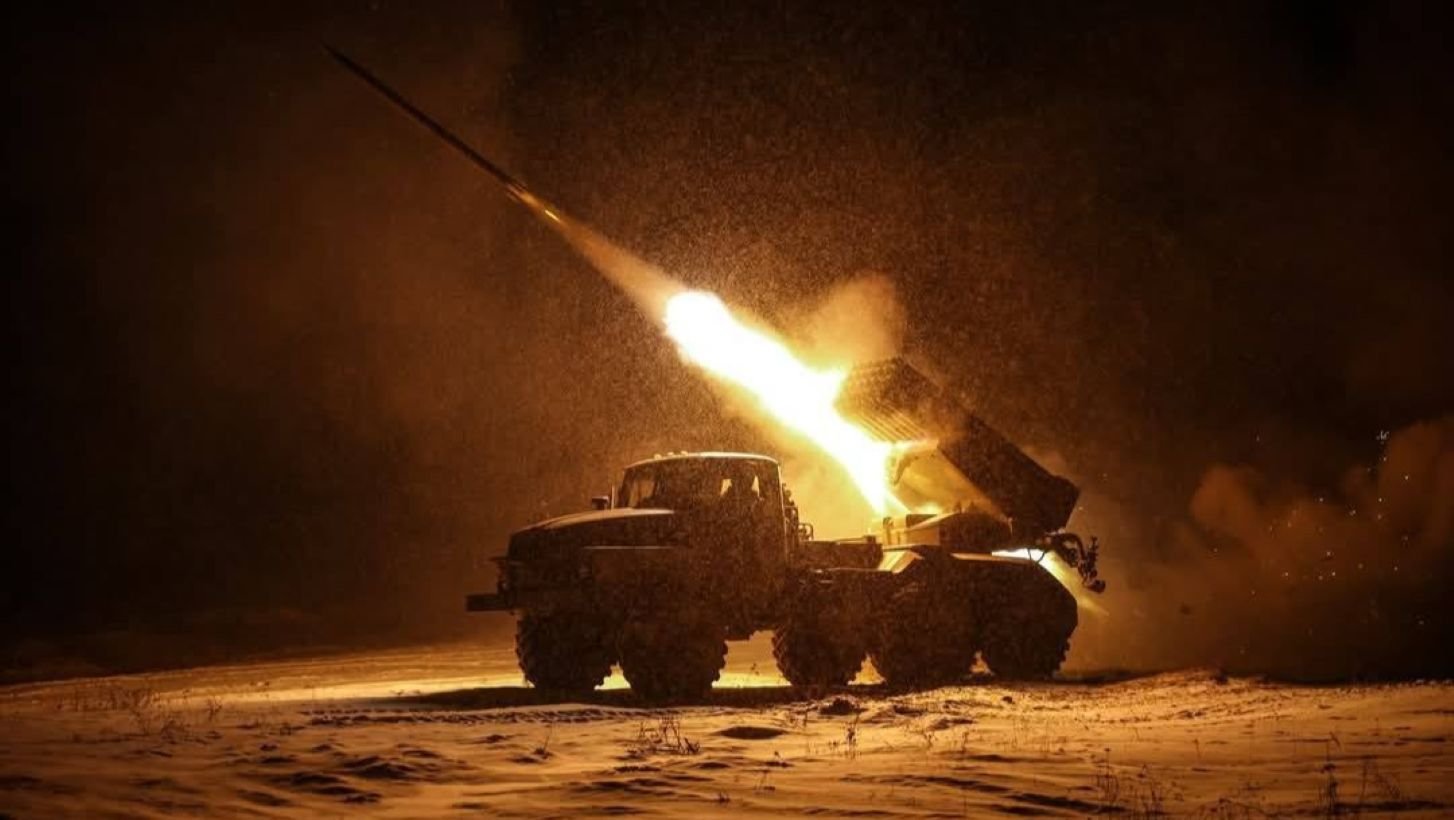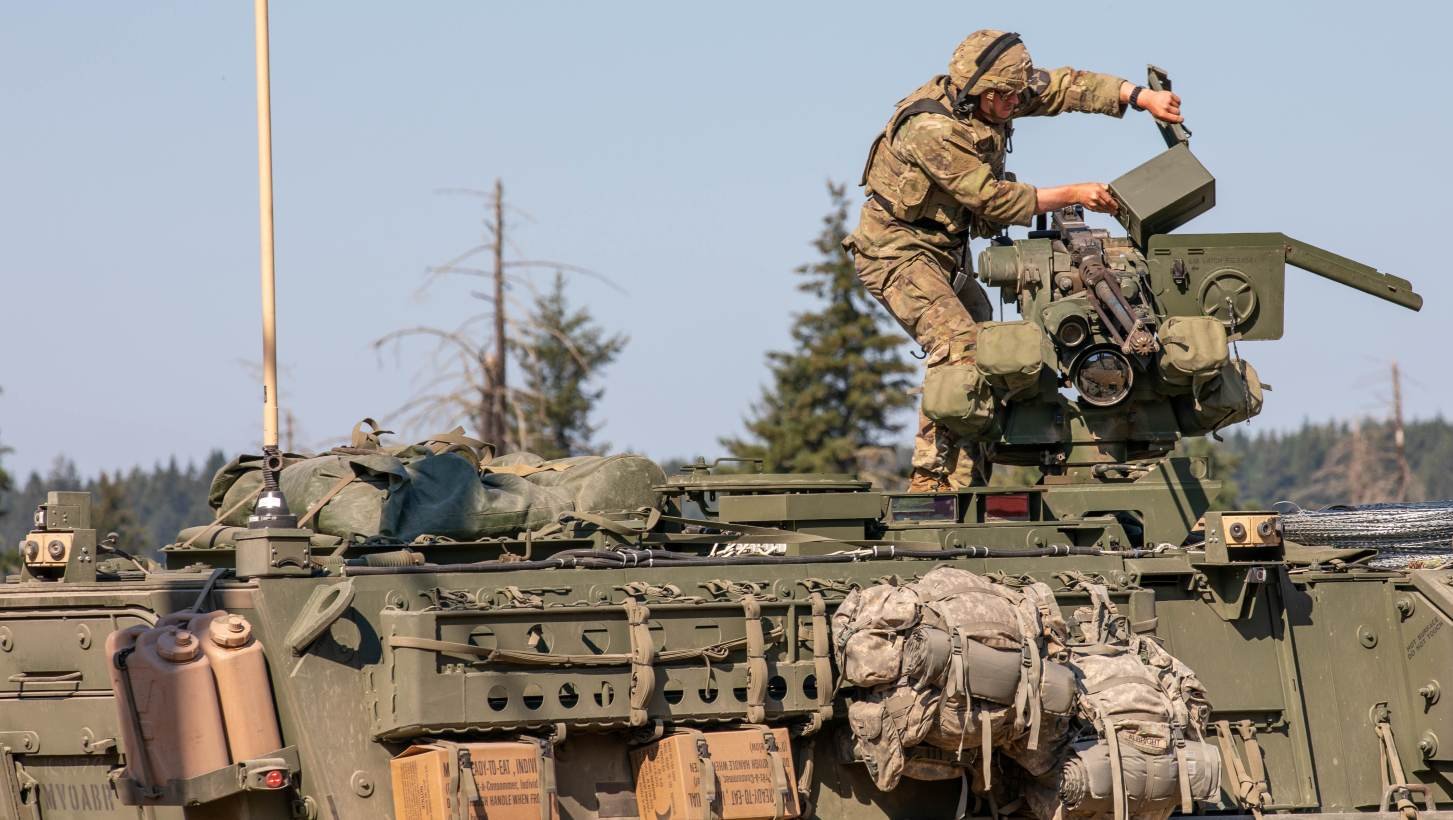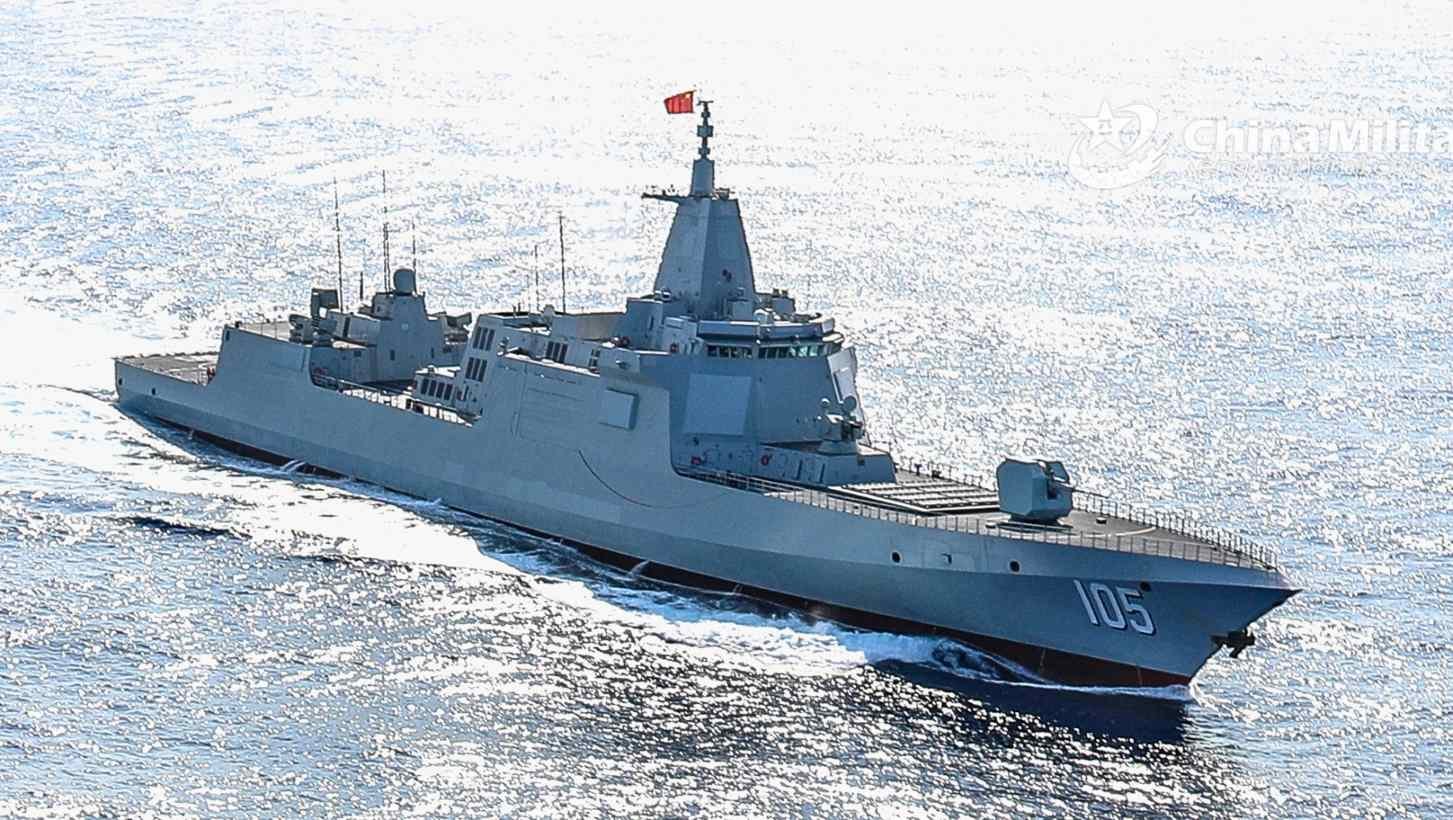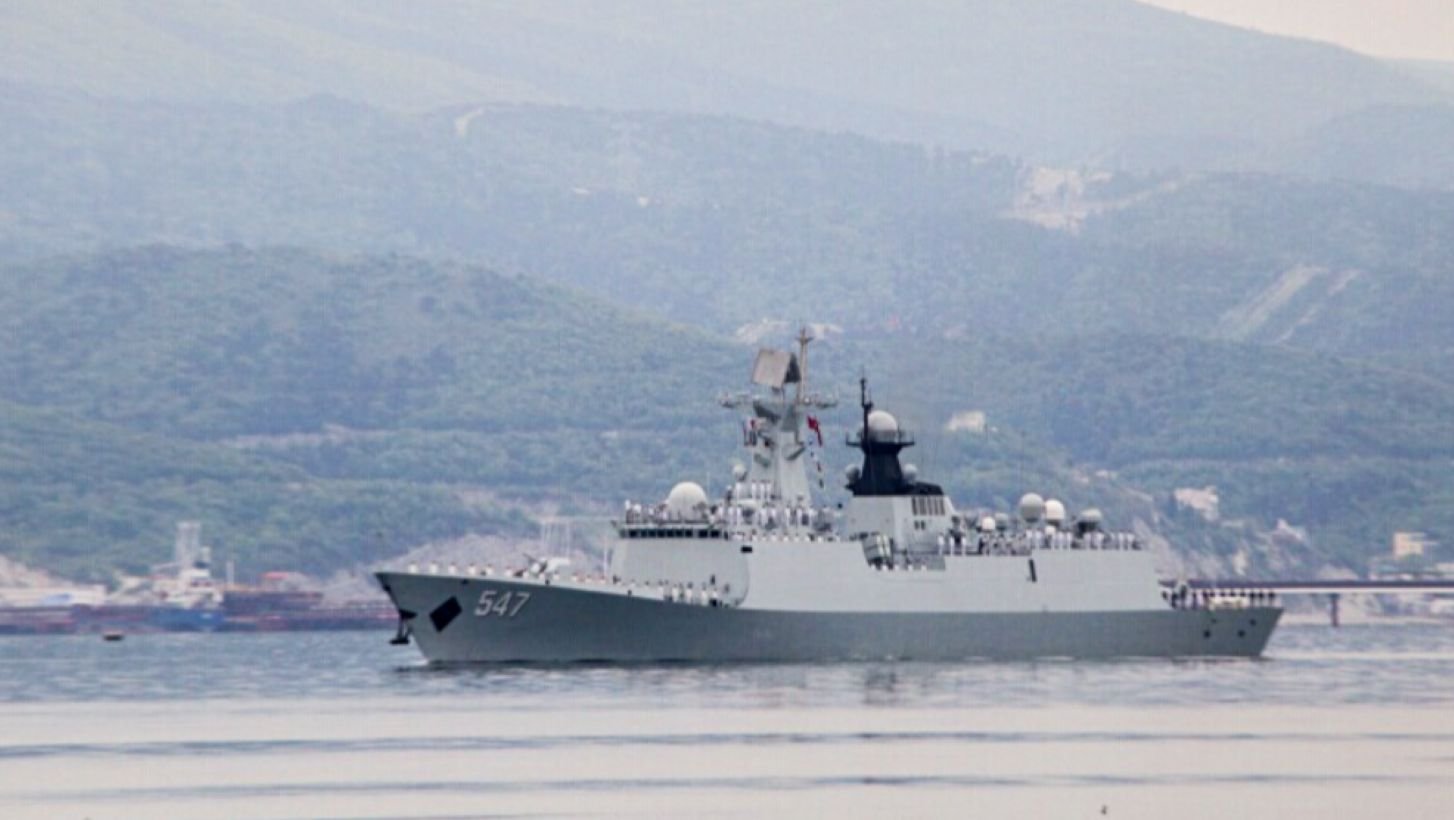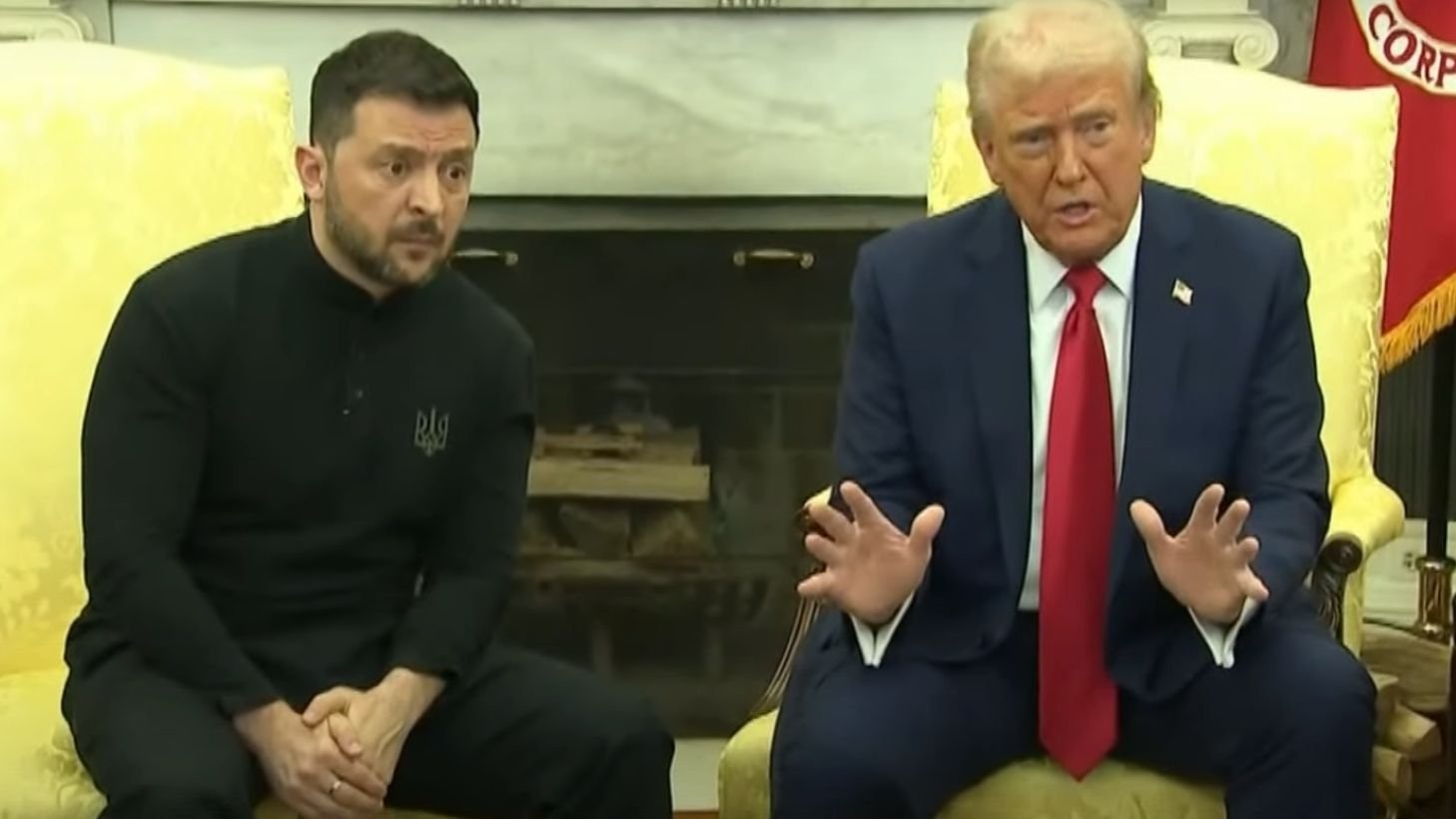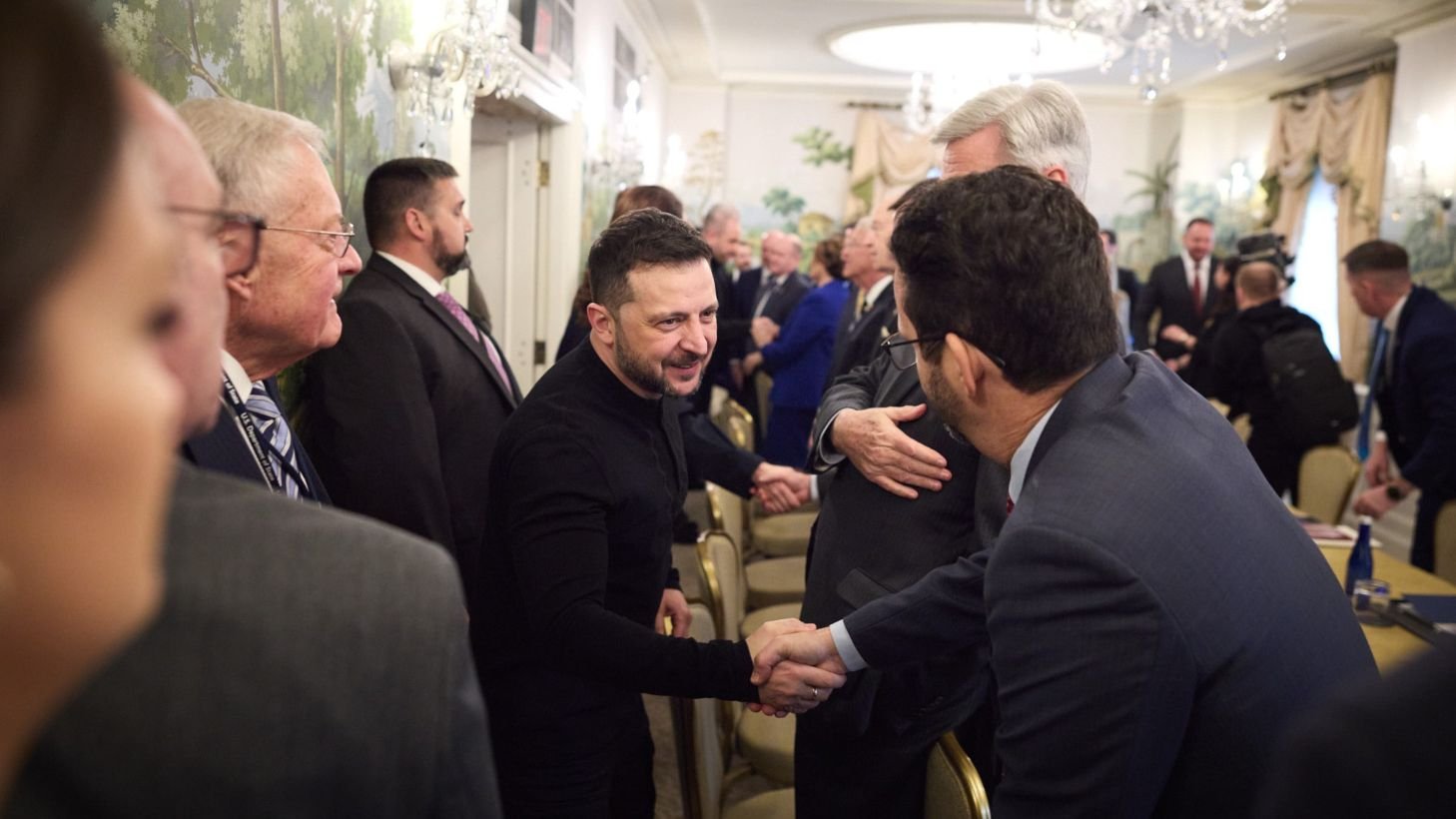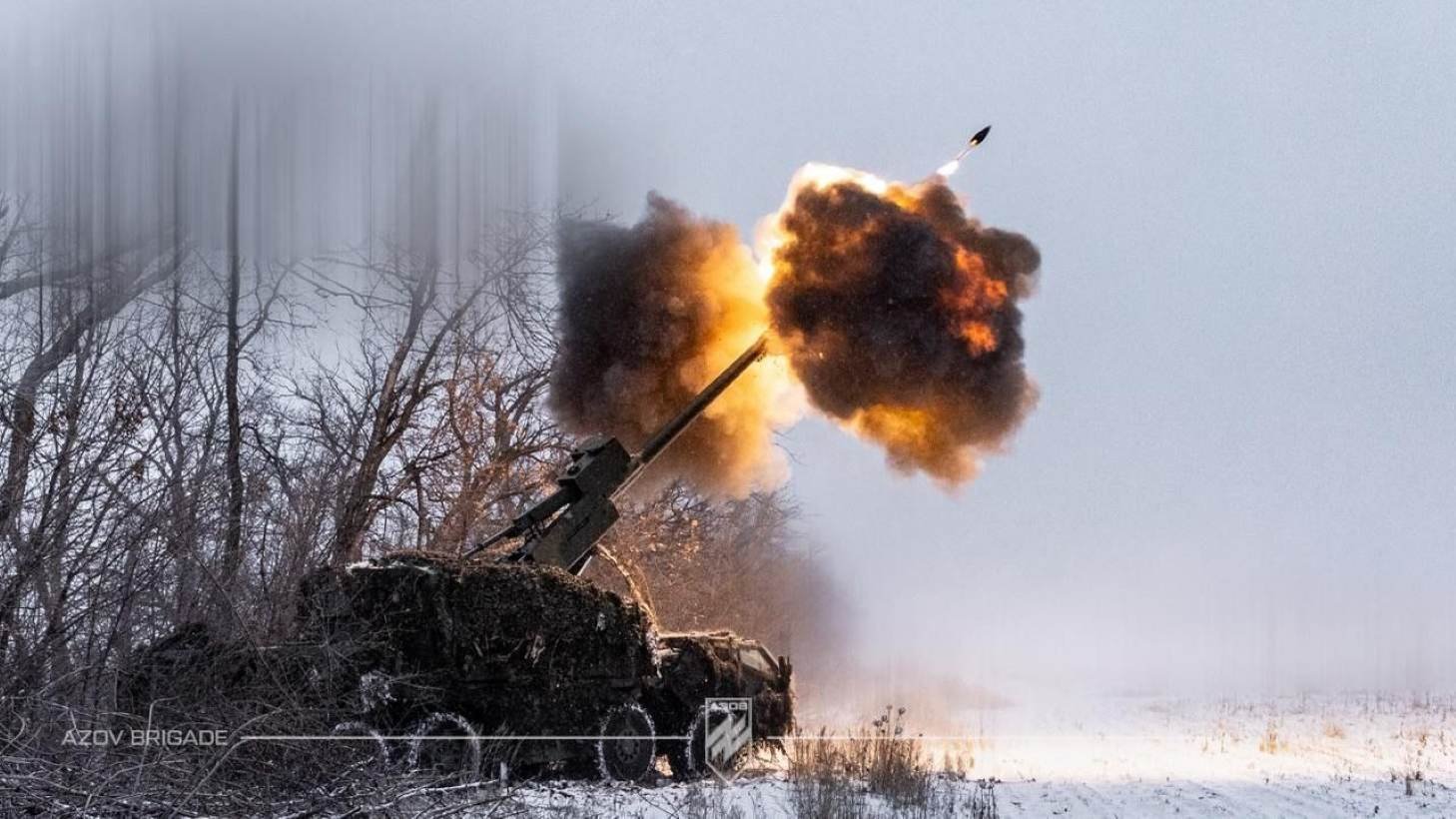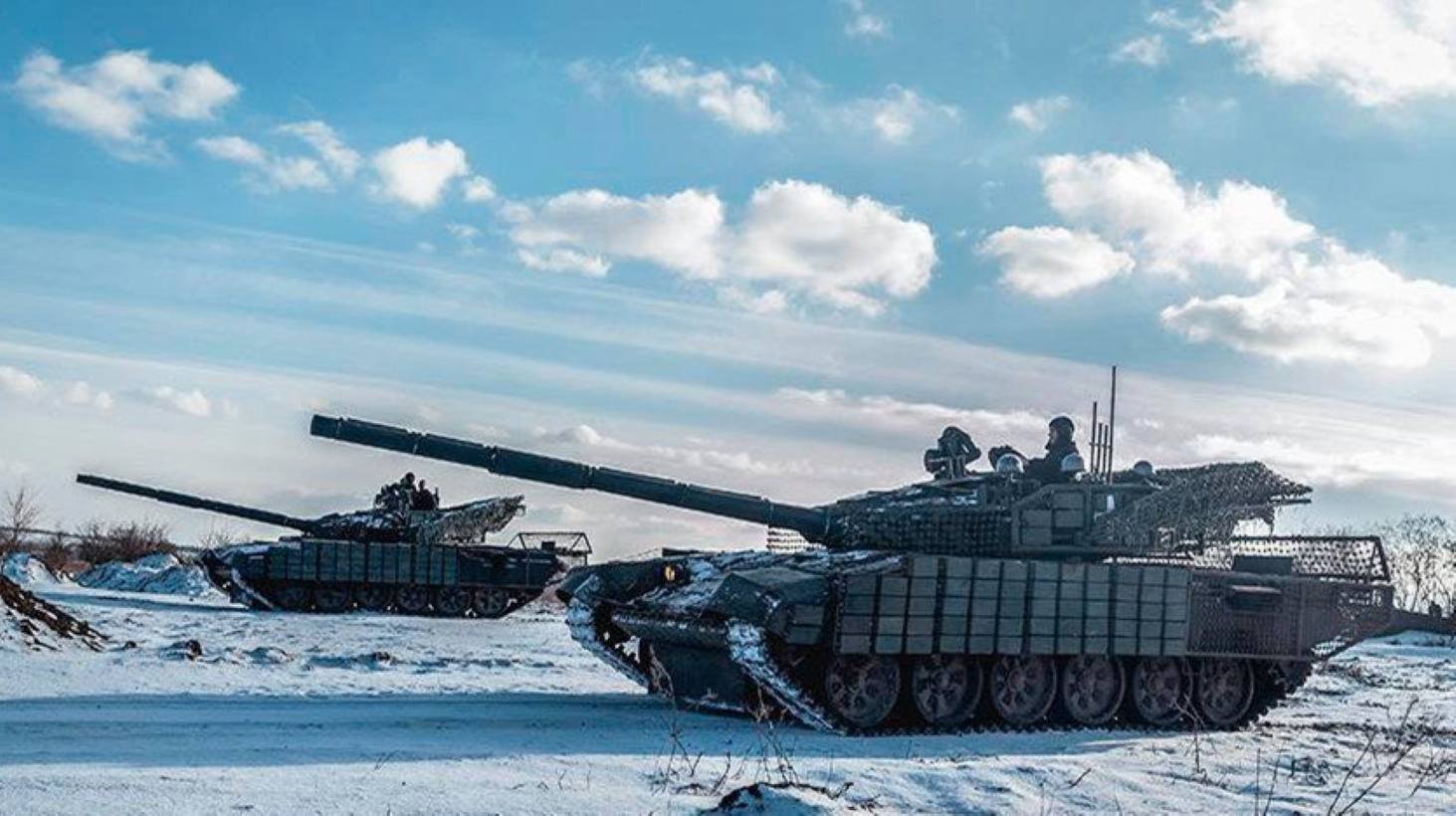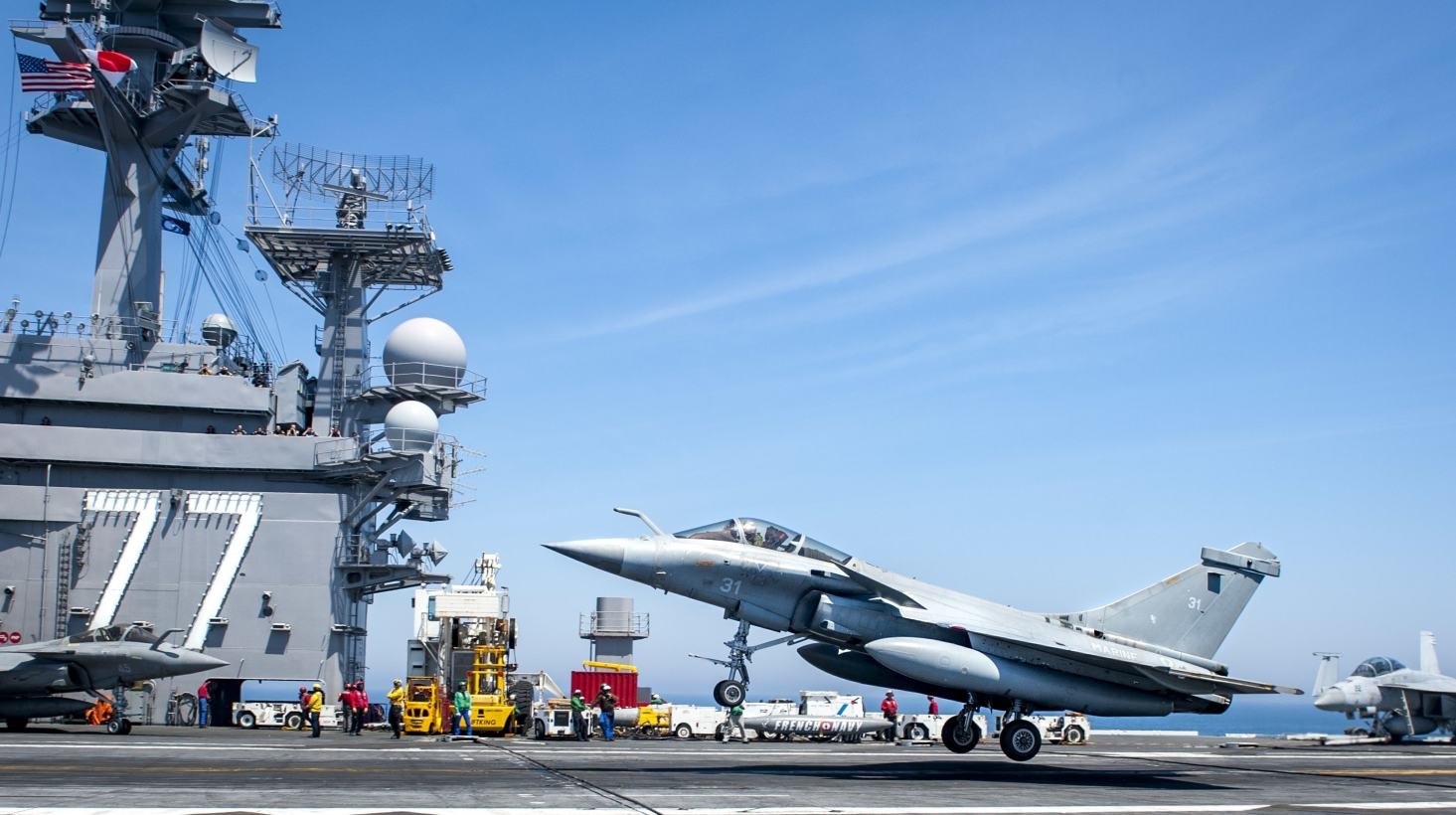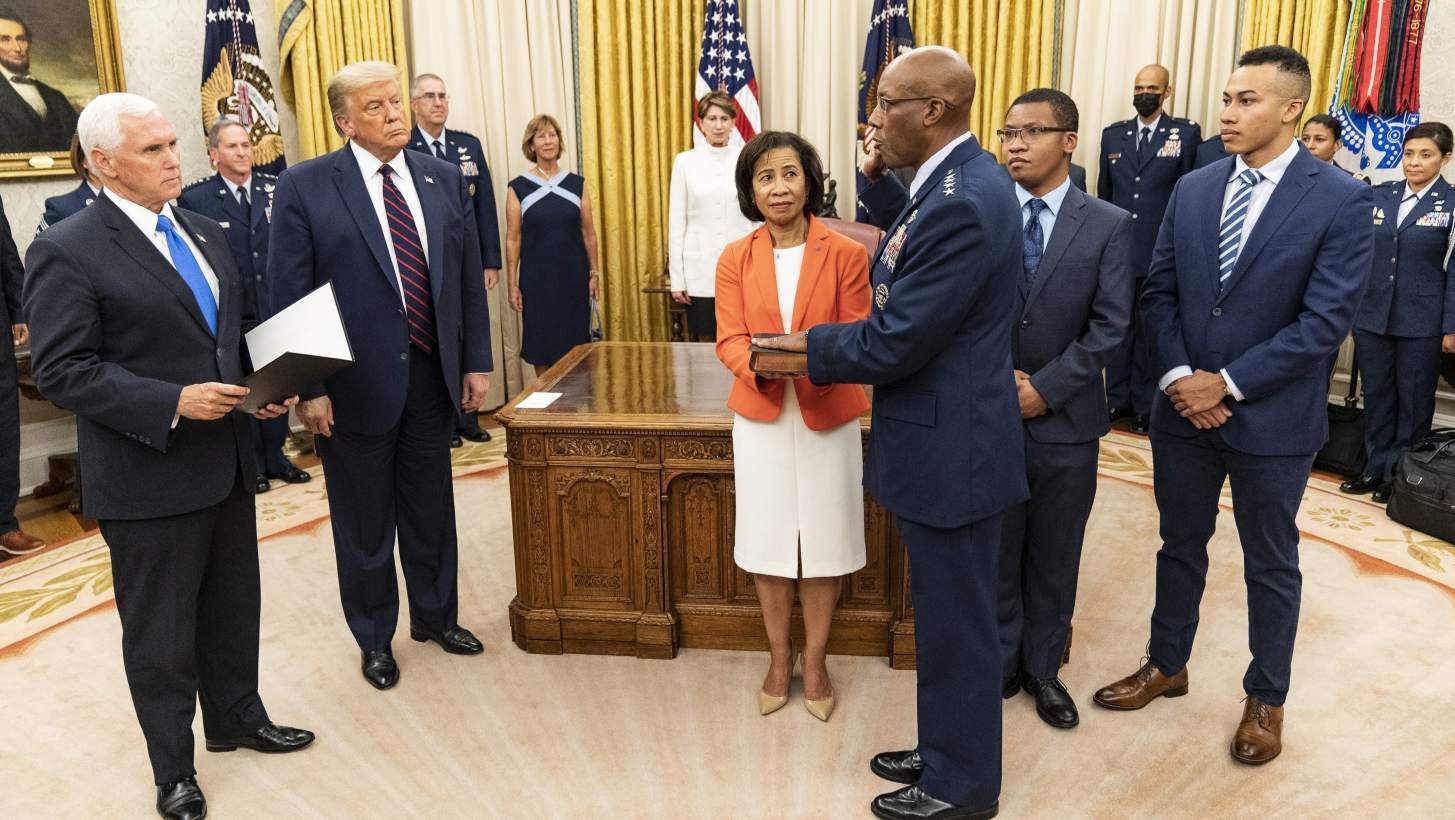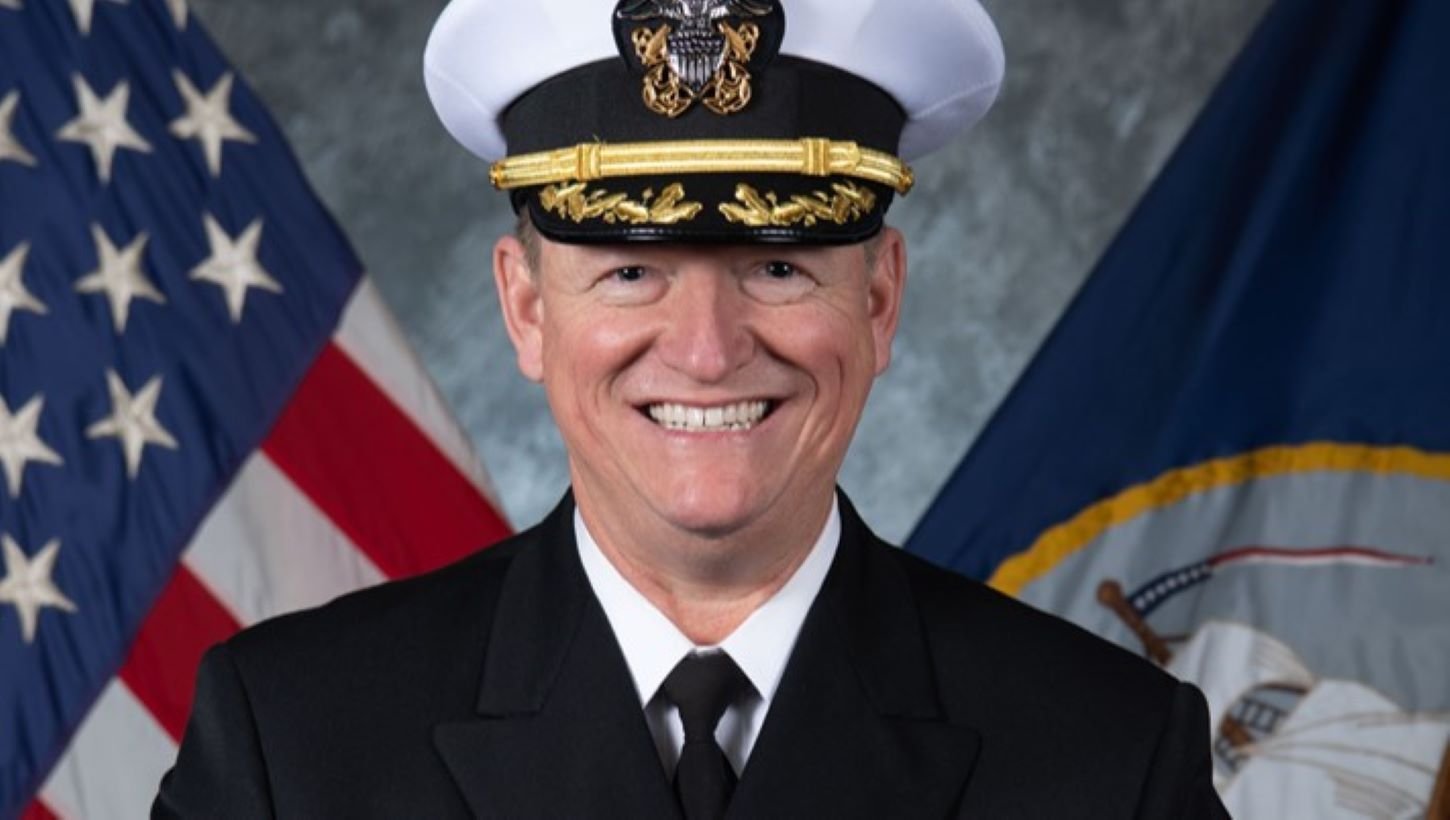-
Posts
790 -
Joined
-
Last visited
Content Type
Profiles
Uncrowned Armory News
Prepping Cookbook
Conspiracy Theories
Uncrowned Tactical Sports News
Prepping
Forums
Events
Everything posted by Uncrowned Guard
-
US Navy Carrier Group Strengthens Presence Amid North Korean Missile Tests Days after North Korea's fourth missile test this year, the Carl Vinson Carrier Strike Group marked its arrival in South Korea. This event underlines the continuous enforcement of the U.S. military presence, notably against Pyongyang's escalating missile tests. A Scheduled Visit with Strategic Timing The USS Carl Vinson aircraft carrier and its support ships from the strike group reached Busan, South Korea, on March 2. The timing, though stated by the Navy as part of a routine schedule, coincides with Pyongyang's latest oceanic missile test, which took place in the Yellow Sea on February 26. North Korean state media reported that the missiles covered a distance of approximately 130 miles under the supervision of leader Kim Jong Un. This development has since been verified by South Korea's military forces. The missile tests were allegedly carried out as a message to the "enemies escalating the confrontation environment", as stated by the North Korean state media. Reemphasizing Commitment to a Free Indo-Pacific Recognizing the crucial role of the maritime and air domains, U.S. Forces Korea Commander Gen. Xavier T. Brunson said the presence of Carl Vinson in South Korea reconfirms the commitment to maintaining a free and open Indo-Pacific. Integrating these capabilities into an all-domain approach bolsters the strategic importance of this particular visit. "The Carl Vinson’s presence here not only underscores the importance of both the maritime and air domains but also reaffirms our commitment to maintaining a free and open Indo-Pacific by integrating these unique capabilities into our comprehensive all-domain approach," stated Brunson during his visit to the carrier. The first carrier group to visit South Korea since June 2024, the Carl Vinson Carrier Strike Group, operates in the U.S. Navy’s 7th Fleet area. Before arriving in South Korea, the carrier was engaged in the Philippine Sea-based Exercise Pacific Steller 2025, a joint force exercise with the French Navy and the Japanese Maritime Self-Defense Force. Strengthening the Naval Fleet The carrier strike group includes the Ticonderoga-class guided-missile cruiser, USS Princeton, and the pair of Arleigh Burke-class guided-missile destroyers – USS Sterett and USS William P. Lawrence. The group also carries the Carrier Air Wing 2, which comprises squadrons flying F-35C Lightning II, F/A-18E/F Super Hornets, and MH-60R/S Seahawks, among other aircraft. The US Responds to Aggression with Military Exercise In response to Pyongyang's continued acts of aggression, the United States has orchestrated various military exercises and force projection missions over the Korean Peninsula. This strategic show of strength involves bomber flyovers and joint aircraft exercises with South Korea and Japan, reassuring partners and upholding a free Indo-Pacific.
-
- us navy
- north korea
- (and 3 more)
-
US Navy Carrier Group Strengthens Presence Amid North Korean Missile Tests Days after North Korea's fourth missile test this year, the Carl Vinson Carrier Strike Group marked its arrival in South Korea. This event underlines the continuous enforcement of the U.S. military presence, notably against Pyongyang's escalating missile tests. A Scheduled Visit with Strategic Timing The USS Carl Vinson aircraft carrier and its support ships from the strike group reached Busan, South Korea, on March 2. The timing, though stated by the Navy as part of a routine schedule, coincides with Pyongyang's latest oceanic missile test, which took place in the Yellow Sea on February 26. North Korean state media reported that the missiles covered a distance of approximately 130 miles under the supervision of leader Kim Jong Un. This development has since been verified by South Korea's military forces. The missile tests were allegedly carried out as a message to the "enemies escalating the confrontation environment", as stated by the North Korean state media. Reemphasizing Commitment to a Free Indo-Pacific Recognizing the crucial role of the maritime and air domains, U.S. Forces Korea Commander Gen. Xavier T. Brunson said the presence of Carl Vinson in South Korea reconfirms the commitment to maintaining a free and open Indo-Pacific. Integrating these capabilities into an all-domain approach bolsters the strategic importance of this particular visit. "The Carl Vinson’s presence here not only underscores the importance of both the maritime and air domains but also reaffirms our commitment to maintaining a free and open Indo-Pacific by integrating these unique capabilities into our comprehensive all-domain approach," stated Brunson during his visit to the carrier. The first carrier group to visit South Korea since June 2024, the Carl Vinson Carrier Strike Group, operates in the U.S. Navy’s 7th Fleet area. Before arriving in South Korea, the carrier was engaged in the Philippine Sea-based Exercise Pacific Steller 2025, a joint force exercise with the French Navy and the Japanese Maritime Self-Defense Force. Strengthening the Naval Fleet The carrier strike group includes the Ticonderoga-class guided-missile cruiser, USS Princeton, and the pair of Arleigh Burke-class guided-missile destroyers – USS Sterett and USS William P. Lawrence. The group also carries the Carrier Air Wing 2, which comprises squadrons flying F-35C Lightning II, F/A-18E/F Super Hornets, and MH-60R/S Seahawks, among other aircraft. The US Responds to Aggression with Military Exercise In response to Pyongyang's continued acts of aggression, the United States has orchestrated various military exercises and force projection missions over the Korean Peninsula. This strategic show of strength involves bomber flyovers and joint aircraft exercises with South Korea and Japan, reassuring partners and upholding a free Indo-Pacific. View full article
-
- us navy
- north korea
- (and 3 more)
-
Russian Forces Witness Historic Vehicle Casualties in February In the span of February, Ukrainian forces disintegrated an unprecedented quantity of Russian machinery since the outset of the full-blown assault, as stated by Ukraine's Defense Ministry. The shortest month bore witness to the obliteration of 3,472 Russian vehicles and fuel reservoirs, alongside 596 armored means of warfare and 331 war tanks, as declared in the ministry's report. Lower Combat Encounters But Heightened Air Strikes in February The month of February saw a dip in combat encounters, amounting to 3,274 from the preceding 5,087 in January. However, this did not translate to a peaceful stretch for the Ukrainian squadrons. Instead, they endured an escalated wave of air raids from the Russian side across their strategic posts and adjoining civilian territories. The attacks launched approximately 2,400 navigated aerial explosives in January, a figure that surged to 3,522 by February's end. Shadows of Dwindling Manpower Loom Over Russia's Forces Russia's army suffered grave losses in its ranks per the General Staff's personnel casualty data. The Russian military saw an irreversible loss of 36,570 individuals in the month of February alone. Despite Russia making meager territorial gains in eastern Ukraine and Kursk Oblast recently, it has come at a steep price of mass casualties and crucial equipment losses. Russian Commanders in Dire Straits as Equipment Supplies Diminish Amid depleting military resources, Russian commanders are backed into a corner and have been compelled to compromise on protection equipment for their soldiers. This precarious scenario is evidenced by the military's resort to civilian automobiles for launching assaults. As per the General Staff's recent report on March 1, Russia has faced a staggering loss of 875,610 troops on Ukrainian soil since it commenced its full-scale invasion on February 24, 2022. This estimation aligns with the calculations made by Western intelligence agencies.
-
- russian vehicle casualties
- ukrainian defense ministry
- (and 3 more)
-
Russian Forces Witness Historic Vehicle Casualties in February In the span of February, Ukrainian forces disintegrated an unprecedented quantity of Russian machinery since the outset of the full-blown assault, as stated by Ukraine's Defense Ministry. The shortest month bore witness to the obliteration of 3,472 Russian vehicles and fuel reservoirs, alongside 596 armored means of warfare and 331 war tanks, as declared in the ministry's report. Lower Combat Encounters But Heightened Air Strikes in February The month of February saw a dip in combat encounters, amounting to 3,274 from the preceding 5,087 in January. However, this did not translate to a peaceful stretch for the Ukrainian squadrons. Instead, they endured an escalated wave of air raids from the Russian side across their strategic posts and adjoining civilian territories. The attacks launched approximately 2,400 navigated aerial explosives in January, a figure that surged to 3,522 by February's end. Shadows of Dwindling Manpower Loom Over Russia's Forces Russia's army suffered grave losses in its ranks per the General Staff's personnel casualty data. The Russian military saw an irreversible loss of 36,570 individuals in the month of February alone. Despite Russia making meager territorial gains in eastern Ukraine and Kursk Oblast recently, it has come at a steep price of mass casualties and crucial equipment losses. Russian Commanders in Dire Straits as Equipment Supplies Diminish Amid depleting military resources, Russian commanders are backed into a corner and have been compelled to compromise on protection equipment for their soldiers. This precarious scenario is evidenced by the military's resort to civilian automobiles for launching assaults. As per the General Staff's recent report on March 1, Russia has faced a staggering loss of 875,610 troops on Ukrainian soil since it commenced its full-scale invasion on February 24, 2022. This estimation aligns with the calculations made by Western intelligence agencies. View full article
-
- russian vehicle casualties
- ukrainian defense ministry
- (and 3 more)
-
Stryker Brigade Combat Team Deployment: Making A Stand At The Southern Border In response to instructions issued by President Trump, Secretary of Defense Pete Hegseth has directed the deployment of a Stryker Brigade Combat Team (SBCT) and General Support Aviation Battalion. Tasked with augmenting existing operations to fortify the southern border and uphold America's sovereign integrity, the deployment signifies Trump's administration's priority to solidify the nation's borders. The multifaceted forces are expected to report on site within a few weeks. This initiative highlights the Department of Defense's unwavering commitment to work in conjunction with the Department of Homeland Security to safeguard America's territorial integrity under the leadership of President Trump. Pentagon Mobilizes Strykers to US-Mexico Border The Pentagon has authorized the dispatch of up to 3,000 active-duty soldiers to the U.S.-Mexico border. The Brigades, which included soldiers from a motorized unit armed with Stryker combat vehicles, will strengthen the region, per defense officials' confirmation to The Washington Post. Secretary of Defense Pete Hegseth sanctioned the deployment amid escalating tensions surrounding border security and prevalent concerns over drug cartels and illicit migration. Primarily from the 4th Infantry Division's 2nd Stryker Brigade at Fort Carson, Colorado, the units will also include specialists in engineering, intelligence, and public relations. The deployment order, which includes 20-ton armored Stryker combat vehicles designed for swift response in intricate operational situations, has yet to receive public commentary from the U.S. Northern Command and the Pentagon. Heightened Measures Against Cross-Border Crimes The move comes on the heels of reports suggesting that Hegseth cautioned Mexican officials about the U.S. military's readiness to act single-handedly against drug cartels. This warning surfaced should Mexico fail to take stringent measures to stem fentanyl trafficking and illegal migration. Allegedly, the Mexican authorities reacted with surprise and anger, interpreting the warning as an indication of potential U.S. military strikes within Mexican territory. The possibility of unilateral action has caused unease within the Mexican government, considering the U.S.'s history of intervention in Mexico's domestic affairs. Assigned to the southern border, this decision places thousands of U.S. troops in a strategic position, stressing the growing significance of the Pentagon in border security operations. Indeed, the U.S. Government is grappling with record levels of illegal crossings and violence related to drug cartels. Furthermore, the deployment of Stryker combat vehicles, typically used for urban warfare and rapid response missions, indicates an intensifying military presence in response to escalating security challenges along the border. While the U.S. military has regularly offered support to border enforcement operations—primarily in the form of logistical and surveillance backup—this latest deployment is considered one of the largest in recent years. The duration of the troops' stationing at the border or any potential escalations remains undetermined at this point.
-
- stryker
- deployment
-
(and 2 more)
Tagged with:
-
Stryker Brigade Combat Team Deployment: Making A Stand At The Southern Border In response to instructions issued by President Trump, Secretary of Defense Pete Hegseth has directed the deployment of a Stryker Brigade Combat Team (SBCT) and General Support Aviation Battalion. Tasked with augmenting existing operations to fortify the southern border and uphold America's sovereign integrity, the deployment signifies Trump's administration's priority to solidify the nation's borders. The multifaceted forces are expected to report on site within a few weeks. This initiative highlights the Department of Defense's unwavering commitment to work in conjunction with the Department of Homeland Security to safeguard America's territorial integrity under the leadership of President Trump. Pentagon Mobilizes Strykers to US-Mexico Border The Pentagon has authorized the dispatch of up to 3,000 active-duty soldiers to the U.S.-Mexico border. The Brigades, which included soldiers from a motorized unit armed with Stryker combat vehicles, will strengthen the region, per defense officials' confirmation to The Washington Post. Secretary of Defense Pete Hegseth sanctioned the deployment amid escalating tensions surrounding border security and prevalent concerns over drug cartels and illicit migration. Primarily from the 4th Infantry Division's 2nd Stryker Brigade at Fort Carson, Colorado, the units will also include specialists in engineering, intelligence, and public relations. The deployment order, which includes 20-ton armored Stryker combat vehicles designed for swift response in intricate operational situations, has yet to receive public commentary from the U.S. Northern Command and the Pentagon. Heightened Measures Against Cross-Border Crimes The move comes on the heels of reports suggesting that Hegseth cautioned Mexican officials about the U.S. military's readiness to act single-handedly against drug cartels. This warning surfaced should Mexico fail to take stringent measures to stem fentanyl trafficking and illegal migration. Allegedly, the Mexican authorities reacted with surprise and anger, interpreting the warning as an indication of potential U.S. military strikes within Mexican territory. The possibility of unilateral action has caused unease within the Mexican government, considering the U.S.'s history of intervention in Mexico's domestic affairs. Assigned to the southern border, this decision places thousands of U.S. troops in a strategic position, stressing the growing significance of the Pentagon in border security operations. Indeed, the U.S. Government is grappling with record levels of illegal crossings and violence related to drug cartels. Furthermore, the deployment of Stryker combat vehicles, typically used for urban warfare and rapid response missions, indicates an intensifying military presence in response to escalating security challenges along the border. While the U.S. military has regularly offered support to border enforcement operations—primarily in the form of logistical and surveillance backup—this latest deployment is considered one of the largest in recent years. The duration of the troops' stationing at the border or any potential escalations remains undetermined at this point. View full article
-
- stryker
- deployment
-
(and 2 more)
Tagged with:
-

Xi Pushes China-Russia Coordination Amid Rising NATO Tensions
Uncrowned Guard posted an article in Military News
Enhanced International Coordination Urged by President Xi China's President Xi Jinping has urged for an intensification of coordination between China and Russia on international and regional matters. On February 28, Xi made his sentiments known during a meeting with Mr Sergei Shoigu, who holds the post of Secretary in Russia's Security Council. His call for strengthened ties was broadcasted via Chinese state media outlets. Maintaining Communication for Significant Agendas In addition to fostering enhanced coordination, President Xi emphasized the importance of maintaining robust communication across different levels. He alluded to pivotal agendas that both nations are set to undertake in the future. In a separate interaction on the same day, Mr Shoigu met with Chinese Foreign Minister Wang Yi. Wang reaffirmed the Sino-Russian relationship, describing it as "rock-solid and unshakable". This sentiment was circulated in a statement by the Chinese Foreign Ministry. Furthermore, both parties agreed to organize a new series of strategic security consultations when the timing is appropriate. Increased NATO Influence in Asia Deemed Unacceptable The expansion of NATO influence and activity in Asia was mutually declared unacceptable by both nations. The Security Council of Russia substantiated this perspective, stating that NATO's enlarged responsibility zone encroaching on the Asia-Pacific region is intolerable. Additionally, Mr Shoigu and President Xi agreed to be ready for future rounds of strategic security consultations at varied levels. Remembering World War II Victory Over Nazi Germany Preparations for commemorative events in Moscow in May were also tackled. This event will mark the 80th anniversary of WWII's victory over Nazi Germany, a significant moment for both Russian and Chinese history.-
- xi
- china-russia coordination
-
(and 2 more)
Tagged with:
-
Enhanced International Coordination Urged by President Xi China's President Xi Jinping has urged for an intensification of coordination between China and Russia on international and regional matters. On February 28, Xi made his sentiments known during a meeting with Mr Sergei Shoigu, who holds the post of Secretary in Russia's Security Council. His call for strengthened ties was broadcasted via Chinese state media outlets. Maintaining Communication for Significant Agendas In addition to fostering enhanced coordination, President Xi emphasized the importance of maintaining robust communication across different levels. He alluded to pivotal agendas that both nations are set to undertake in the future. In a separate interaction on the same day, Mr Shoigu met with Chinese Foreign Minister Wang Yi. Wang reaffirmed the Sino-Russian relationship, describing it as "rock-solid and unshakable". This sentiment was circulated in a statement by the Chinese Foreign Ministry. Furthermore, both parties agreed to organize a new series of strategic security consultations when the timing is appropriate. Increased NATO Influence in Asia Deemed Unacceptable The expansion of NATO influence and activity in Asia was mutually declared unacceptable by both nations. The Security Council of Russia substantiated this perspective, stating that NATO's enlarged responsibility zone encroaching on the Asia-Pacific region is intolerable. Additionally, Mr Shoigu and President Xi agreed to be ready for future rounds of strategic security consultations at varied levels. Remembering World War II Victory Over Nazi Germany Preparations for commemorative events in Moscow in May were also tackled. This event will mark the 80th anniversary of WWII's victory over Nazi Germany, a significant moment for both Russian and Chinese history. View full article
-
- xi
- china-russia coordination
-
(and 2 more)
Tagged with:
-

China-Taiwan Tensions Spike Over Emboldened Statements
Uncrowned Guard posted an article in Military News
China Issues Stern Warning to Taiwan over Expanded Military Exercises In response to Taiwan's announcement of extended military training drills, China's Ministry of National Defense responded with a clear and severe warning. Wu Qian, the ministry's spokesperson, shared the uncompromisingly harsh message with Beijing reporters on Thursday, stating, "We will come and get you, sooner or later." This explicit unease from Beijing's perspective further highlights the increasing tensions with Taiwan over its intensified self-defense measures. Escalation Following Expanded Taiwan Military Exercises The increasingly humming diplomatic atmosphere between the two nations follows Taiwan's revelation that its annual Han Kuang military exercises are slated for a broadened scope this year. The modified training program revolves around an extended live-fire phase, with the deployment of nearly 3,000 reserve troops. Taiwan views these expanded drills as a critical element of its defensive strategy to either resist or discourage any potential military aggression from China, a country that has had a public, longstanding intention to bring the independently governed island under its control. Accusations and Warning from Beijing In a critique targeted at Taiwan's government, the Democratic Progressive Party (DPP), Wu contended that Taipei's endeavors to bolster its defense were a gross misjudgment. He accused Taiwan of soliciting U.S. support for independence and attempting to withstand unification by military means. Moreover, Wu expressed fear that Taiwan's strategies would only lead to its self-destruction. Beijing regards Taiwan as an integral part of its territory, persistently resisting what it sees as international interference, with particular objection to involvement from the United States. Maritime Incursions Stir Further Concerns On the same day that Wu delivered his stark warning, reports indicate that four Chinese Coast Guard vessels ventured into Taiwan's territorial waters near Kinmen, prompting interception and expulsion by Taiwan's own Coast Guard. This incursion marks the latest in a spate of similar maritime incidents, increasing the strain between the two nations.-
- china-taiwan tensions
- military drill
-
(and 3 more)
Tagged with:
-
China Issues Stern Warning to Taiwan over Expanded Military Exercises In response to Taiwan's announcement of extended military training drills, China's Ministry of National Defense responded with a clear and severe warning. Wu Qian, the ministry's spokesperson, shared the uncompromisingly harsh message with Beijing reporters on Thursday, stating, "We will come and get you, sooner or later." This explicit unease from Beijing's perspective further highlights the increasing tensions with Taiwan over its intensified self-defense measures. Escalation Following Expanded Taiwan Military Exercises The increasingly humming diplomatic atmosphere between the two nations follows Taiwan's revelation that its annual Han Kuang military exercises are slated for a broadened scope this year. The modified training program revolves around an extended live-fire phase, with the deployment of nearly 3,000 reserve troops. Taiwan views these expanded drills as a critical element of its defensive strategy to either resist or discourage any potential military aggression from China, a country that has had a public, longstanding intention to bring the independently governed island under its control. Accusations and Warning from Beijing In a critique targeted at Taiwan's government, the Democratic Progressive Party (DPP), Wu contended that Taipei's endeavors to bolster its defense were a gross misjudgment. He accused Taiwan of soliciting U.S. support for independence and attempting to withstand unification by military means. Moreover, Wu expressed fear that Taiwan's strategies would only lead to its self-destruction. Beijing regards Taiwan as an integral part of its territory, persistently resisting what it sees as international interference, with particular objection to involvement from the United States. Maritime Incursions Stir Further Concerns On the same day that Wu delivered his stark warning, reports indicate that four Chinese Coast Guard vessels ventured into Taiwan's territorial waters near Kinmen, prompting interception and expulsion by Taiwan's own Coast Guard. This incursion marks the latest in a spate of similar maritime incidents, increasing the strain between the two nations. View full article
-
- china-taiwan tensions
- military drill
-
(and 3 more)
Tagged with:
-
Tensions Rise as High-Stakes Meeting Unfolds in the Oval Office President Trump and Vice President JD Vance expressed deep dissatisfaction with Ukrainian President Volodymyr Zelenskyy during what was supposed to be a significant and constructive face-to-face meeting in the Oval Office. Their encounter was marked by a tense atmosphere as negotiations over a pending rare mineral resources deal stood on shaky ground. President Trump conveyed a stern message to Zelenskyy, voicing threats to withdraw support if Ukraine does not broker peace with Russia. Both Trump and Vance accused the Ukrainian president of behaving disrespectfully during crucial diplomatic interactions. Diplomats' Dilemma: Accusations and Retorts Fly across the Room Among the many fiery exchanges, the highlight was Vance's criticism of the Biden administration and advocating for more diplomacy. Zelenskyy countered Vance’s argument, questioning the effectiveness of diplomacy in light of repeated violations by Russia. The discussion escalated to Vance accusing Zelenskyy of exemplifying disrespect, asserting that the Ukraine leader was ungratefully exploiting the global media to make his case. Vance emphasized that Zelenskyy should show gratitude to the US administration for attempting to resolve the ongoing conflict. The tension underscored as Zelenskyy questioned Vance about his understanding of the war-ravaged situation in Ukraine. Vance responded with accusations that Zelenskyy had constructed a "propaganda tour" for visitors. An Unresolved Ending: Ukraine’s Security Hangs in the Balance Despite Zelenskyy maintaining a composed demeanor throughout the tumultuous exchange, the meeting ended without visible progress. Trump maintained a defiant stance, warning Zelenskyy about Ukraine's precarious standing and pressed for a tone of gratitude. Discussions also involved Ukraine's demand for security assurances in tandem with a potential ceasefire agreement. The persistence of hostilities, however, cast doubt on the proposed ceasefire and raised questions about Russia's commitment to uphold it. As the meeting concluded, Trump maintained his criticism of Zelenskyy, voicing his assessments on social media and stating that Zelenskyy was not prepared for peace as long as it involved American participation. During the buildup to the meeting, there were speculations about a significant deal between the US and Ukraine to share mineral resources. It was hoped that the agreement would bring continuous security support for Ukraine. Despite the public tension and harsh criticism exchange, negotiations over the mineral resources deal continued. Interestingly, even as the war continues, Trump expressed his trust in Russian President Vladimir Putin, affirming Putin wants to end the conflict. This stance, coupled with Trump's controversial labeling of Zelenskyy as a "dictator," raises further questions about the future of US- Ukraine relations and the enduring Ukraine- Russia crisis.
-
Tensions Rise as High-Stakes Meeting Unfolds in the Oval Office President Trump and Vice President JD Vance expressed deep dissatisfaction with Ukrainian President Volodymyr Zelenskyy during what was supposed to be a significant and constructive face-to-face meeting in the Oval Office. Their encounter was marked by a tense atmosphere as negotiations over a pending rare mineral resources deal stood on shaky ground. President Trump conveyed a stern message to Zelenskyy, voicing threats to withdraw support if Ukraine does not broker peace with Russia. Both Trump and Vance accused the Ukrainian president of behaving disrespectfully during crucial diplomatic interactions. Diplomats' Dilemma: Accusations and Retorts Fly across the Room Among the many fiery exchanges, the highlight was Vance's criticism of the Biden administration and advocating for more diplomacy. Zelenskyy countered Vance’s argument, questioning the effectiveness of diplomacy in light of repeated violations by Russia. The discussion escalated to Vance accusing Zelenskyy of exemplifying disrespect, asserting that the Ukraine leader was ungratefully exploiting the global media to make his case. Vance emphasized that Zelenskyy should show gratitude to the US administration for attempting to resolve the ongoing conflict. The tension underscored as Zelenskyy questioned Vance about his understanding of the war-ravaged situation in Ukraine. Vance responded with accusations that Zelenskyy had constructed a "propaganda tour" for visitors. An Unresolved Ending: Ukraine’s Security Hangs in the Balance Despite Zelenskyy maintaining a composed demeanor throughout the tumultuous exchange, the meeting ended without visible progress. Trump maintained a defiant stance, warning Zelenskyy about Ukraine's precarious standing and pressed for a tone of gratitude. Discussions also involved Ukraine's demand for security assurances in tandem with a potential ceasefire agreement. The persistence of hostilities, however, cast doubt on the proposed ceasefire and raised questions about Russia's commitment to uphold it. As the meeting concluded, Trump maintained his criticism of Zelenskyy, voicing his assessments on social media and stating that Zelenskyy was not prepared for peace as long as it involved American participation. During the buildup to the meeting, there were speculations about a significant deal between the US and Ukraine to share mineral resources. It was hoped that the agreement would bring continuous security support for Ukraine. Despite the public tension and harsh criticism exchange, negotiations over the mineral resources deal continued. Interestingly, even as the war continues, Trump expressed his trust in Russian President Vladimir Putin, affirming Putin wants to end the conflict. This stance, coupled with Trump's controversial labeling of Zelenskyy as a "dictator," raises further questions about the future of US- Ukraine relations and the enduring Ukraine- Russia crisis. View full article
-
Update: This Deal Appears to be off due to a clash of mindsets between Trump and Zelensky. Historic Meeting Between Trump and Zelensky Culminates in Natural Resource Agreement Signing The presidents of the United States and Ukraine convened on February 28th in Washington D.C., signing a groundbreaking agreement on Ukraine's natural resources. U.S. President Donald Trump and Ukraine's President Volodymyr Zelensky successfully concluded weeks of grueling negotiations to formalize a deal that had initially been rebuffed by Ukraine due to a perceived lack of security countermeasures from the U.S. Disputes and Controversies Preceding the Agreement In the run-up to the agreement, initial drafts proposed by the U.S. Treasury were initially deemed inadequate by Ukraine. The rejected drafts were branded as imposing unilateral duties on Ukraine without sufficient security commitments from Washington. Trump's public denouncement of Zelensky following the rejection caused further controversies. Accusing Zelensky of dictatorial tendencies and denying democratic processes, Trump's harsh criticism parroted unfounded claims propagated by the Kremlin about Zelensky's legitimacy. Financial Fundamentals and Security Concerns of the Agreement The blueprint of the contentious agreement entails the creation of a fund to be financed with 50% of the earnings from the future liquidation of state-owned mineral resources. This portfolio includes oil, gas, and logistics infrastructure. While the Ukrainian negotiating team managed to soften some of the harsher stipulations set forth in the early drafts – such as a demand for Ukraine to contribute $500 billion to a reconstruction fund, and a 2:1 clause mandating that Ukraine doubles any aid provided by the U.S. – security guarantees remain largely absent from the final agreement. Trump's subsequent retraction of his derogatory remarks against Zelensky coincided with advancements made in the deal negotiations - a final draft was made available to the Kyiv Independent. After querying his earlier remarks about Zelensky being a "dictator" during a meeting with U.K. Prime Minister Keir Starmer, Trump expressed surprise, questioning whether he had made such a statement. The Path Forward: Security Commitments and Future Negotiations Following the agreement, Zelensky indicated that future negotiations with the U.S. and other allies are expected to focus on security concerns. Trump, however, has already communicated his anticipation that European allies shoulder the responsibility for Ukraine's post-war security. As it stands, the revolutionary agreement signifies a monumental milestone for both nations, despite the underlying points of contention, as they stride towards furthering their diplomatic and economic alliances. View full article
-
Update: This Deal Appears to be off due to a clash of mindsets between Trump and Zelensky. Historic Meeting Between Trump and Zelensky Culminates in Natural Resource Agreement Signing The presidents of the United States and Ukraine convened on February 28th in Washington D.C., signing a groundbreaking agreement on Ukraine's natural resources. U.S. President Donald Trump and Ukraine's President Volodymyr Zelensky successfully concluded weeks of grueling negotiations to formalize a deal that had initially been rebuffed by Ukraine due to a perceived lack of security countermeasures from the U.S. Disputes and Controversies Preceding the Agreement In the run-up to the agreement, initial drafts proposed by the U.S. Treasury were initially deemed inadequate by Ukraine. The rejected drafts were branded as imposing unilateral duties on Ukraine without sufficient security commitments from Washington. Trump's public denouncement of Zelensky following the rejection caused further controversies. Accusing Zelensky of dictatorial tendencies and denying democratic processes, Trump's harsh criticism parroted unfounded claims propagated by the Kremlin about Zelensky's legitimacy. Financial Fundamentals and Security Concerns of the Agreement The blueprint of the contentious agreement entails the creation of a fund to be financed with 50% of the earnings from the future liquidation of state-owned mineral resources. This portfolio includes oil, gas, and logistics infrastructure. While the Ukrainian negotiating team managed to soften some of the harsher stipulations set forth in the early drafts – such as a demand for Ukraine to contribute $500 billion to a reconstruction fund, and a 2:1 clause mandating that Ukraine doubles any aid provided by the U.S. – security guarantees remain largely absent from the final agreement. Trump's subsequent retraction of his derogatory remarks against Zelensky coincided with advancements made in the deal negotiations - a final draft was made available to the Kyiv Independent. After querying his earlier remarks about Zelensky being a "dictator" during a meeting with U.K. Prime Minister Keir Starmer, Trump expressed surprise, questioning whether he had made such a statement. The Path Forward: Security Commitments and Future Negotiations Following the agreement, Zelensky indicated that future negotiations with the U.S. and other allies are expected to focus on security concerns. Trump, however, has already communicated his anticipation that European allies shoulder the responsibility for Ukraine's post-war security. As it stands, the revolutionary agreement signifies a monumental milestone for both nations, despite the underlying points of contention, as they stride towards furthering their diplomatic and economic alliances.
-
Staggering Death Toll: Over 165,000 Russian Soldiers Reportedly Killed in Ukraine Conflict Reports from independent Russian media outlets, Meduza and Mediazona, suggest a massive loss of life among the Russian armed forces in the ongoing Ukraine conflict. Since the commencement of the full-scale invasion of Ukraine, an estimated total of 165,000 Russian troops have been killed according to the report published on February 24. Escalating Consequence: Rising Russian Casualties Year after Year To arrive at this shocking statistic, the investigators utilized open-source research and statistical analysis. The data indicates an unsettling trend - Russian casualties have been increasing with each passing year. In 2022, the death toll of Russian soldiers was around 20,000. However, this figure saw a significant increase, more than doubling in 2023, estimated to be between 47,000 and 53,000. By 2024, nearly 100,000 Russian soldiers had reportedly lost their lives. This alarming assessment doesn't take into account the forcible recruits from the occupied Ukrainian territories or foreign fighters aiding Russian forces. The final estimate was reached by cross-verifying the roll call of the deceased with Russia's Register of Inheritance Cases. The Greater Loss: Beyond The Deceased The overall impact of the conflict on Russian personnel expands beyond fatalities. The Ukrainian General Staff, on Feb. 24, reported a total of 868,230 cases, encompassing not only the dead but also wounded, missing, and captive personnel. Such overwhelming figures suggest that the devastation caused by the war is far wider and deeper than death alone. Ukrainian President Volodymyr Zelensky too shed light on the dire situation. Moscow had lost nearly 250,000 soldiers in the conflict, with battles in Russia's Kursk Oblast accounting for 20,000 of the total, Zelensky claimed on Feb. 15. He also noted that over 610,000 Russian soldiers had been wounded since the onset of the invasion. The Battlefront: Embroiled in War Against Ukraine In August 2024, Kyiv undertook a cross-border incursion into Kursk, initially securing about 1,300 square kilometers (500 square miles) of Russian territory. The persistent presence of Ukrainian forces was met with additional forces being deployed. Approximately 12,000 North Korean soldiers were sent to Kursk Oblast last fall to assist Russian forces in combating Ukrainian soldiers. Russia's Painful Tide: Surging Cases of Missing Persons The rising death toll in the conflict has had tragic effects on the home front. Russian courts dealt with about 20,000 missing persons cases in 2024, which is a distressing two-and-a-half times the pre-war annual average, as reported by Mediazona on Feb. 4. The escalating conflict and increasing casualties, it seems, are leaving long-lasting marks on Russia, both in its ranks and among its civilians.
-
- russia ukraine war
- russian casualties
- (and 2 more)
-
Staggering Death Toll: Over 165,000 Russian Soldiers Reportedly Killed in Ukraine Conflict Reports from independent Russian media outlets, Meduza and Mediazona, suggest a massive loss of life among the Russian armed forces in the ongoing Ukraine conflict. Since the commencement of the full-scale invasion of Ukraine, an estimated total of 165,000 Russian troops have been killed according to the report published on February 24. Escalating Consequence: Rising Russian Casualties Year after Year To arrive at this shocking statistic, the investigators utilized open-source research and statistical analysis. The data indicates an unsettling trend - Russian casualties have been increasing with each passing year. In 2022, the death toll of Russian soldiers was around 20,000. However, this figure saw a significant increase, more than doubling in 2023, estimated to be between 47,000 and 53,000. By 2024, nearly 100,000 Russian soldiers had reportedly lost their lives. This alarming assessment doesn't take into account the forcible recruits from the occupied Ukrainian territories or foreign fighters aiding Russian forces. The final estimate was reached by cross-verifying the roll call of the deceased with Russia's Register of Inheritance Cases. The Greater Loss: Beyond The Deceased The overall impact of the conflict on Russian personnel expands beyond fatalities. The Ukrainian General Staff, on Feb. 24, reported a total of 868,230 cases, encompassing not only the dead but also wounded, missing, and captive personnel. Such overwhelming figures suggest that the devastation caused by the war is far wider and deeper than death alone. Ukrainian President Volodymyr Zelensky too shed light on the dire situation. Moscow had lost nearly 250,000 soldiers in the conflict, with battles in Russia's Kursk Oblast accounting for 20,000 of the total, Zelensky claimed on Feb. 15. He also noted that over 610,000 Russian soldiers had been wounded since the onset of the invasion. The Battlefront: Embroiled in War Against Ukraine In August 2024, Kyiv undertook a cross-border incursion into Kursk, initially securing about 1,300 square kilometers (500 square miles) of Russian territory. The persistent presence of Ukrainian forces was met with additional forces being deployed. Approximately 12,000 North Korean soldiers were sent to Kursk Oblast last fall to assist Russian forces in combating Ukrainian soldiers. Russia's Painful Tide: Surging Cases of Missing Persons The rising death toll in the conflict has had tragic effects on the home front. Russian courts dealt with about 20,000 missing persons cases in 2024, which is a distressing two-and-a-half times the pre-war annual average, as reported by Mediazona on Feb. 4. The escalating conflict and increasing casualties, it seems, are leaving long-lasting marks on Russia, both in its ranks and among its civilians. View full article
-
- russia ukraine war
- russian casualties
- (and 2 more)
-

Nordic Nations Unite to Aid Ukraine's Fight and Recovery
Uncrowned Guard posted an article in Ongoing Conflicts
Nordic Nations Stand with Ukraine in Crisis Times On February 24, which marked the third anniversary of Russia's pervasive invasion of Ukraine, Nordic countries- Denmark, Norway, Sweden, and Finland, pledged substantial humanitarian, military, and energy aid to the beleaguered nation. The announcement underscored the joint visit of the Nordic leaders to Kyiv, Ukraine's capital city, on the inception day of the full-blown war. Denmark Increases Humanitarian and Military Assistance Denmark, according to its Foreign Ministry, is extending a generous sum of 405 million Danish kroner ($56.8 million) primarily for humanitarian aid and restoration endeavors in Ukraine amid the ongoing grave circumstances. The project is divided into two sections, with one-half intended to meet essential needs such as food, medicine, water, and shelter in Ukraine's most impacted areas. The other half will cater to the country's reconstruction demands. Since the outbreak of the invasion, Denmark's total humanitarian contribution to Ukraine has exceeded 1 billion Danish kroner (over $140 million). In parallel, Denmark's military aid to Ukraine during the invasion has escalated to about $7.5 billion. Norway Bolsters Aid for Ukraine's Humanitarian and Energy Security Norway pledged a substantial amount of 12.5 billion Norwegian kroner ($1.1 billion) in aid to Ukraine for humanitarian and energy security measures. This financial allotment forms part of the package sanctioned by the Norwegian parliament in November for the 2025 Nansen Support Program for Ukraine. This program has seen an accumulation of 35 billion Norwegian kroner ($3 billion) in support, from which $1.1 billion is allocated to civilian necessities and $2 billion is dedicated to military backing. Sweden and Finland Uphold Ukraine's Independence and Resilience Sweden, in its quest to support Ukraine's struggle for autonomy and security, will fund air defense systems worth 1.2 billion Swedish kroner (over $113 million). This sum is drawn from an aid package worth 13.5 billion Swedish kroner ($1.2 billion), initialized in January. "Strengthening Ukraine's capacity to defend itself against Russian hostility also uplifts our security," remarked Swedish Prime Minister Ulf Kristersson. Finland too, has extended its support by contributing €4.5 million ($4.7 million) through the Partnership Fund for a Resilient Ukraine (PFRU). The aid will cover the period from 2025 to 2027, aiming to foster Ukraine's resilience and stability. "Reconstructing Ukraine and bolstering basic services will facilitate the country's resilience, an element also pivotal to achieving lasting peace," Finnish Foreign Trade and Development Minister Ville Tavio asserted. Finland has already donated €4.3 million ($4.5 million) for the fund between 2022 and 2024 to ensure a robust, resilient Ukraine.-
- nordic nations
- ukraine
-
(and 4 more)
Tagged with:
-
Nordic Nations Stand with Ukraine in Crisis Times On February 24, which marked the third anniversary of Russia's pervasive invasion of Ukraine, Nordic countries- Denmark, Norway, Sweden, and Finland, pledged substantial humanitarian, military, and energy aid to the beleaguered nation. The announcement underscored the joint visit of the Nordic leaders to Kyiv, Ukraine's capital city, on the inception day of the full-blown war. Denmark Increases Humanitarian and Military Assistance Denmark, according to its Foreign Ministry, is extending a generous sum of 405 million Danish kroner ($56.8 million) primarily for humanitarian aid and restoration endeavors in Ukraine amid the ongoing grave circumstances. The project is divided into two sections, with one-half intended to meet essential needs such as food, medicine, water, and shelter in Ukraine's most impacted areas. The other half will cater to the country's reconstruction demands. Since the outbreak of the invasion, Denmark's total humanitarian contribution to Ukraine has exceeded 1 billion Danish kroner (over $140 million). In parallel, Denmark's military aid to Ukraine during the invasion has escalated to about $7.5 billion. Norway Bolsters Aid for Ukraine's Humanitarian and Energy Security Norway pledged a substantial amount of 12.5 billion Norwegian kroner ($1.1 billion) in aid to Ukraine for humanitarian and energy security measures. This financial allotment forms part of the package sanctioned by the Norwegian parliament in November for the 2025 Nansen Support Program for Ukraine. This program has seen an accumulation of 35 billion Norwegian kroner ($3 billion) in support, from which $1.1 billion is allocated to civilian necessities and $2 billion is dedicated to military backing. Sweden and Finland Uphold Ukraine's Independence and Resilience Sweden, in its quest to support Ukraine's struggle for autonomy and security, will fund air defense systems worth 1.2 billion Swedish kroner (over $113 million). This sum is drawn from an aid package worth 13.5 billion Swedish kroner ($1.2 billion), initialized in January. "Strengthening Ukraine's capacity to defend itself against Russian hostility also uplifts our security," remarked Swedish Prime Minister Ulf Kristersson. Finland too, has extended its support by contributing €4.5 million ($4.7 million) through the Partnership Fund for a Resilient Ukraine (PFRU). The aid will cover the period from 2025 to 2027, aiming to foster Ukraine's resilience and stability. "Reconstructing Ukraine and bolstering basic services will facilitate the country's resilience, an element also pivotal to achieving lasting peace," Finnish Foreign Trade and Development Minister Ville Tavio asserted. Finland has already donated €4.3 million ($4.5 million) for the fund between 2022 and 2024 to ensure a robust, resilient Ukraine. View full article
-
- nordic nations
- ukraine
-
(and 4 more)
Tagged with:
-
France Boosts Defense Budget and Accelerates Rearmament Plan In the aftermath of several global conflicts, France is heightening its defense production and seeking additional financial investment for its rearmament plan. This announcement was made by Sébastien Lecornu, France's Armed Forces Minister, in an interview with newspaper, Le Parisien. The initiative comes within the context of the Ukrainian conflict and other issues in the Middle East which have pushed France to rethink its defense stance. Seeking Investors for the Future of Defense To meet the monetary demands of these ambitious plans, the French government is scheduling a conference for March 20. The event, which will take place in Bercy, is expected to gather key figures from private banking institutions, investment funds, and defense companies. This meeting aims to pool financial resources to fulfill France's rearmament commitment. Lecornu is collaborating closely with the Ministry of Economy to ensure the success of this event. The Minister acknowledged the immense costs of rearmament efforts in light of recent global conflicts. However, he emphasized the urgent need for such investment in the defense sector. To this end, Lecornu hopes to communicate the extent of these necessities not just to the French public, but also to the wider European audience. Enhancing France's Military Economy Lecornu revealed that, apart from state financing, new private funds are undergoing creation in support of this rearmament effort. Further, he discussed plans to invite French civilians to contribute to the defense budget voluntarily. Lecornu assured potential investors of considerable returns, stating that a 1-euro investment can become 2 euros in a decade, considering the durable lifespan of military equipment and ongoing increase in arms exports. The Minister also commented on the notable progress already made in France's military economy. Ground weapon and ammunition manufacturing such as Caesar guns and 155-millimeter shells have amplified significantly. Lecornu stressed that the focus should not solely rest on the strategic guidelines of France's military planning law, but also on the pace of its implementation. Expansion of Naval and Aerial Assets In terms of specific upgrades, Lecornu highlighted the essence of enhancing its naval and air capabilities. The French government intends to extend its fleet of frigates from 15 to 18, enabling control over multiple sea zones including the Baltic Sea. Additionally, the French forces look to augment their aerial prowess with the creation of 20 to 30 additional Rafale fighters. The ground forces will also benefit from this heightened focus on defense, with plans to equip them with drones and advanced electronic warfare equipment. These advancements are driven by the necessity to accommodate changing warfare strategies and to strengthen France's global defense positioning.
-
- france
- french miliatry
-
(and 2 more)
Tagged with:
-
France Boosts Defense Budget and Accelerates Rearmament Plan In the aftermath of several global conflicts, France is heightening its defense production and seeking additional financial investment for its rearmament plan. This announcement was made by Sébastien Lecornu, France's Armed Forces Minister, in an interview with newspaper, Le Parisien. The initiative comes within the context of the Ukrainian conflict and other issues in the Middle East which have pushed France to rethink its defense stance. Seeking Investors for the Future of Defense To meet the monetary demands of these ambitious plans, the French government is scheduling a conference for March 20. The event, which will take place in Bercy, is expected to gather key figures from private banking institutions, investment funds, and defense companies. This meeting aims to pool financial resources to fulfill France's rearmament commitment. Lecornu is collaborating closely with the Ministry of Economy to ensure the success of this event. The Minister acknowledged the immense costs of rearmament efforts in light of recent global conflicts. However, he emphasized the urgent need for such investment in the defense sector. To this end, Lecornu hopes to communicate the extent of these necessities not just to the French public, but also to the wider European audience. Enhancing France's Military Economy Lecornu revealed that, apart from state financing, new private funds are undergoing creation in support of this rearmament effort. Further, he discussed plans to invite French civilians to contribute to the defense budget voluntarily. Lecornu assured potential investors of considerable returns, stating that a 1-euro investment can become 2 euros in a decade, considering the durable lifespan of military equipment and ongoing increase in arms exports. The Minister also commented on the notable progress already made in France's military economy. Ground weapon and ammunition manufacturing such as Caesar guns and 155-millimeter shells have amplified significantly. Lecornu stressed that the focus should not solely rest on the strategic guidelines of France's military planning law, but also on the pace of its implementation. Expansion of Naval and Aerial Assets In terms of specific upgrades, Lecornu highlighted the essence of enhancing its naval and air capabilities. The French government intends to extend its fleet of frigates from 15 to 18, enabling control over multiple sea zones including the Baltic Sea. Additionally, the French forces look to augment their aerial prowess with the creation of 20 to 30 additional Rafale fighters. The ground forces will also benefit from this heightened focus on defense, with plans to equip them with drones and advanced electronic warfare equipment. These advancements are driven by the necessity to accommodate changing warfare strategies and to strengthen France's global defense positioning. View full article
-
- france
- french miliatry
-
(and 2 more)
Tagged with:
-

UK and Norway Forge Defense Ties as Russian Aggression Looms
Uncrowned Guard posted an article in Military News
UK and Norway Initiate Defense Pact Talks Amid Russian Threats In response to intensifying concerns over Russian aggression and wavering American commitment to Europe's security, the United Kingdom and Norway embarked on negotiations for a comprehensive defense pact on Feb. 20. This proposed diplomatic agreement is set to bolster both nations' armed forces while fostering industrial alliances. The British government voiced their stance: "With Russia persisting in the militarization of the High North and Arctic, this novel agreement will fortify the security of the U.K., Norway, and our NATO allies, strengthening defenses on NATO’s northern fringe." The dialogue includes explorations around the protection of critical undersea infrastructure, in the wake of several recent cable damages suspected of Russian interference. U.K. Defense Secretary John Healey affirmed the nation's intent to step into a central role in ensuring European security, exhibiting solidarity in the face of adversity to protect shared interests. European Security Conscious of U.S. Withdrawal Amid signals from the Trump administration that suggest a reduced presence, European nations are joining forces to reinforce security measures. The U.S. has urged Europe to back Ukraine in the face of Russian threats. In response, U.K. Prime Minister Keir Starmer is expected to propose a peacekeeping plan involving 30,000 European soldiers in Ukraine during his impending visit to Washington to meet with President Trump. Swedish Undersea Cable Damage Sparks Investigations Following a new incident of undersea cable damage, Swedish authorities have initiated a sabotage inquiry. According to a report by Goteborgs-Posten on Feb. 21, this case adds to a sequence of damaged undersea infrastructure in the region, which some have linked to hybrid attacks and Russia's "shadow fleet." The fiber-optic cable running between Finland and Germany suffered some damage near Gotland Island within Sweden's Exclusive Economic Zone, as stated by the Swedish Coast Guard. Though Finnish telecom operator, Cinia, characterized the damage as slight and maintained that the cable remained functional, Finnish media notes this is the third such incident within a short span. Swedish Prime Minister Ulf Kristersson underscored the gravity of the situation: "We take all reports of potential damage to infrastructure in the Baltic Sea very seriously. As I have already said, these incidents must be viewed in the context of the existing serious security situation." NATO Increases Presence in Baltic Sea Amid Heightening Tensions Following repeated cases of infrastructure damage, NATO has augmented its presence in the Baltic Sea by assigning extra patrol vessels to counter potential sabotage. Despite numerous Russian-linked vessels being seized in connection to the incidents, there are divergent views within U.S. and European intelligence communities, with some attributing these to simple accidents. These incidents continue to strain NATO-Russia relations, particularly as Western nations rally behind Ukraine in light of the Russian invasion.-
- united kingdom
- norway
-
(and 4 more)
Tagged with:
-
UK and Norway Initiate Defense Pact Talks Amid Russian Threats In response to intensifying concerns over Russian aggression and wavering American commitment to Europe's security, the United Kingdom and Norway embarked on negotiations for a comprehensive defense pact on Feb. 20. This proposed diplomatic agreement is set to bolster both nations' armed forces while fostering industrial alliances. The British government voiced their stance: "With Russia persisting in the militarization of the High North and Arctic, this novel agreement will fortify the security of the U.K., Norway, and our NATO allies, strengthening defenses on NATO’s northern fringe." The dialogue includes explorations around the protection of critical undersea infrastructure, in the wake of several recent cable damages suspected of Russian interference. U.K. Defense Secretary John Healey affirmed the nation's intent to step into a central role in ensuring European security, exhibiting solidarity in the face of adversity to protect shared interests. European Security Conscious of U.S. Withdrawal Amid signals from the Trump administration that suggest a reduced presence, European nations are joining forces to reinforce security measures. The U.S. has urged Europe to back Ukraine in the face of Russian threats. In response, U.K. Prime Minister Keir Starmer is expected to propose a peacekeeping plan involving 30,000 European soldiers in Ukraine during his impending visit to Washington to meet with President Trump. Swedish Undersea Cable Damage Sparks Investigations Following a new incident of undersea cable damage, Swedish authorities have initiated a sabotage inquiry. According to a report by Goteborgs-Posten on Feb. 21, this case adds to a sequence of damaged undersea infrastructure in the region, which some have linked to hybrid attacks and Russia's "shadow fleet." The fiber-optic cable running between Finland and Germany suffered some damage near Gotland Island within Sweden's Exclusive Economic Zone, as stated by the Swedish Coast Guard. Though Finnish telecom operator, Cinia, characterized the damage as slight and maintained that the cable remained functional, Finnish media notes this is the third such incident within a short span. Swedish Prime Minister Ulf Kristersson underscored the gravity of the situation: "We take all reports of potential damage to infrastructure in the Baltic Sea very seriously. As I have already said, these incidents must be viewed in the context of the existing serious security situation." NATO Increases Presence in Baltic Sea Amid Heightening Tensions Following repeated cases of infrastructure damage, NATO has augmented its presence in the Baltic Sea by assigning extra patrol vessels to counter potential sabotage. Despite numerous Russian-linked vessels being seized in connection to the incidents, there are divergent views within U.S. and European intelligence communities, with some attributing these to simple accidents. These incidents continue to strain NATO-Russia relations, particularly as Western nations rally behind Ukraine in light of the Russian invasion. View full article
-
- united kingdom
- norway
-
(and 4 more)
Tagged with:
-
President Trump Dismisses Gen. Charles Q. Brown as Chairman of the Joint Chiefs of Staff In an unexpected move, President Donald Trump dismissed Air Force Gen. Charles Q. Brown from his role as Chairman of the Joint Chiefs of Staff last Friday. This decision sees a decorated and history-making pilot and senior officer removed from office amidst an ongoing drive to erase leaders advocating for diversity and equity within military forces. As the second Black general to hold the role of Chairman, Brown’s exit will likely send ripples through the Pentagon. His tenure, though short-lived at 16 months, had been dominated by ongoing conflict in the Ukraine and escalating unrest in the Middle East. Reactions to Gen. Charles Q. Brown's Dismissal "I want to express my gratitude to General Charles 'CQ' Brown for his extensive contribution, spanning over 40 years of service to our country, including his recent role as our Chairman of the Joint Chiefs of Staff. He is a gentleman of exceptional caliber and an inspiring leader. I wish him and his family all the best for their future," President Trump remarked on social media. President Trump also announced his nomination for Brown's successor, Air Force Lt. Gen. Dan "Razin" Caine. In a surprising turn of events, Defense Secretary Pete Hegseth proclaimed on Friday evening that Chief of Naval Operations Lisa Franchetti and Vice Chief of Staff of the Air Force James Slife would also be removed from their positions. Franchetti earned her place in history in 2023 when she became the Navy's first female leader. Further Changes to Senior Military Leadership Moreover, advocates for the Army, Navy, and Air Force are also set to be replaced, according to Hegseth. This decision comes despite Brown's widespread congressional support and a seemingly amicable encounter with the President in mid-December at the Army-Navy football game. Brown had been regularly conferring with Hegseth, who only assumed his role at the Pentagon a mere four weeks ago. Hegseth expressed confidence in his statement regarding Caine, affirming that his embodiment of the "warfighter ethos" made him an ideal candidate for this critical role. "I look forward to collaborating with him," Hegseth stated. Furthermore, he lauded Brown for his distinction throughout a long-standing career, spanning four decades of duty, and praised him for his thoughtful advisement.
-
- donald trump
- leadership
-
(and 2 more)
Tagged with:
-
President Trump Dismisses Gen. Charles Q. Brown as Chairman of the Joint Chiefs of Staff In an unexpected move, President Donald Trump dismissed Air Force Gen. Charles Q. Brown from his role as Chairman of the Joint Chiefs of Staff last Friday. This decision sees a decorated and history-making pilot and senior officer removed from office amidst an ongoing drive to erase leaders advocating for diversity and equity within military forces. As the second Black general to hold the role of Chairman, Brown’s exit will likely send ripples through the Pentagon. His tenure, though short-lived at 16 months, had been dominated by ongoing conflict in the Ukraine and escalating unrest in the Middle East. Reactions to Gen. Charles Q. Brown's Dismissal "I want to express my gratitude to General Charles 'CQ' Brown for his extensive contribution, spanning over 40 years of service to our country, including his recent role as our Chairman of the Joint Chiefs of Staff. He is a gentleman of exceptional caliber and an inspiring leader. I wish him and his family all the best for their future," President Trump remarked on social media. President Trump also announced his nomination for Brown's successor, Air Force Lt. Gen. Dan "Razin" Caine. In a surprising turn of events, Defense Secretary Pete Hegseth proclaimed on Friday evening that Chief of Naval Operations Lisa Franchetti and Vice Chief of Staff of the Air Force James Slife would also be removed from their positions. Franchetti earned her place in history in 2023 when she became the Navy's first female leader. Further Changes to Senior Military Leadership Moreover, advocates for the Army, Navy, and Air Force are also set to be replaced, according to Hegseth. This decision comes despite Brown's widespread congressional support and a seemingly amicable encounter with the President in mid-December at the Army-Navy football game. Brown had been regularly conferring with Hegseth, who only assumed his role at the Pentagon a mere four weeks ago. Hegseth expressed confidence in his statement regarding Caine, affirming that his embodiment of the "warfighter ethos" made him an ideal candidate for this critical role. "I look forward to collaborating with him," Hegseth stated. Furthermore, he lauded Brown for his distinction throughout a long-standing career, spanning four decades of duty, and praised him for his thoughtful advisement. View full article
-
- donald trump
- leadership
-
(and 2 more)
Tagged with:
-
Nimitz-class Aircraft USS Harry S. Truman Command Change In a surprising turn of events, the U.S. Navy has announced the relieving of the commanding officer of the Nimitz-class aircraft carrier, the USS Harry S. Truman. Citing a "loss of confidence in his ability to command," This development in the Navy command structure affirms the strict standards adhered to for naval officers. Dismissal Stemming from Collision Incident The dismissal of Captain Dave Snowden, the commanding officer (CO) of the aircraft carrier, arrives a little more than a week following a collision with the merchant vessel Besiktas-M near Port Said, Egypt, on Feb. 12. The Feb. 16 statement from the U.S. 6th Fleet sheds light on the incident, disclosing damage to the Truman’s exterior wall of two storage rooms and a maintenance space. The damage also extended to a line handling space, the fantail, and the platform over one of the storage spaces. Despite the unfortunate incident, the Navy remains committed to its motto to hold on to high standards and accountability. Interim Appointment and Admiral Snowden's Future The commander of Carrier Strike Group 8, Rear Adm. Sean Bailey, has been named as the officer responsible for relieving Snowden. Snowden's forthcoming assignment will be with the Naval Air Forces Atlantic. Filling in the gap after Snowden, Capt. Christopher Hill, currently commanding officer of USS Dwight D. Eisenhower, will take on the role of interim commanding officer of the Truman. The USS Dwight D. Eisenhower is currently undergoing scheduled maintenance following its deployment in July 2024 to U.S. Central Command and U.S. European Command. This strategic change in command is stated to be without impact on the Truman’s ongoing deployment in the U.S. 6th Fleet area of operations. A Year of Challenges for the USS Harry S. Truman While the USS Harry S. Truman is accustomed to challenging situations, the past year has been particularly eventful. In a separate incident, Truman’s F/A-18 fighter was inadvertently shot down by the guided-missile cruiser USS Gettysburg in the Red Sea in December last year, with both crew members ejected and safely recovered. Despite these incidents, the USS Harry S. Truman continues its mission, portraying the resilience of the American Navy in the face of challenging situations. Rear Adm. Sean Bailey's Announcement Full Text In the full release, Rear Adm. Sean Bailey was confirmed to be relieving Snowden, who had been the aircraft carrier’s commanding officer since December 2023. The transfer follows the collision on Feb. 12 involving Truman and the merchant vessel Besiktas-M in the vicinity of Port Said, Egypt. Bailey reiterated the line in the sand that the U.S. Navy has drawn – commanding officers are held to the highest standard and actions are taken when those standards are not met. Capt. Christopher Hill will temporarily serve as the commanding officer of the Truman. He assures that the change in command will not impact the deployment or the mission of the Harry S. Truman in the U.S. 6th Fleet area of operations.

